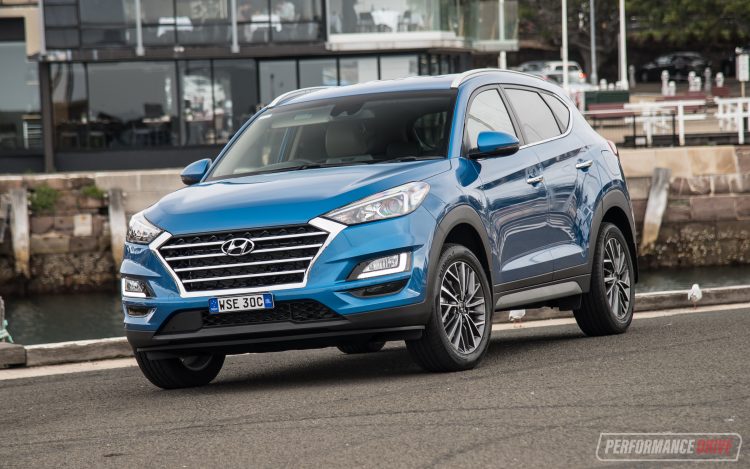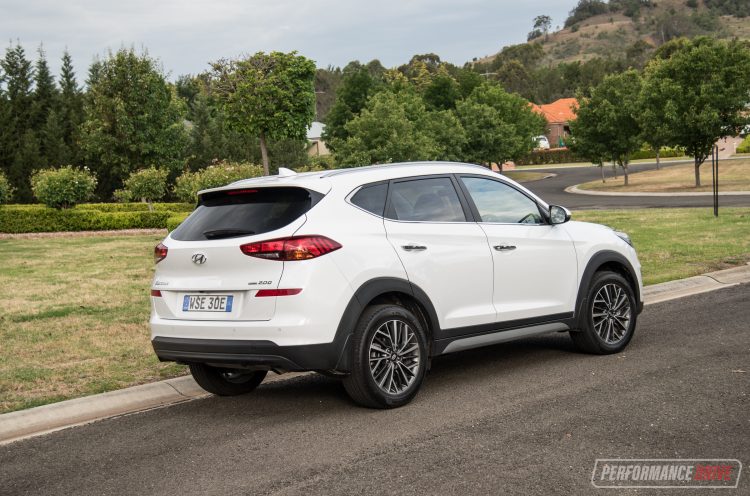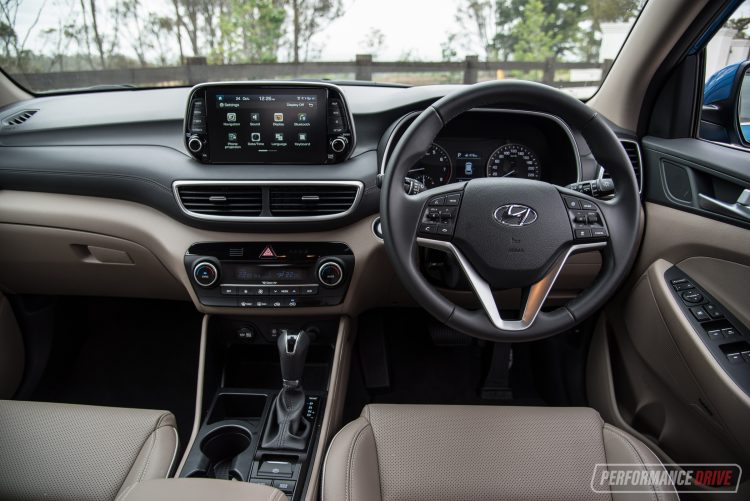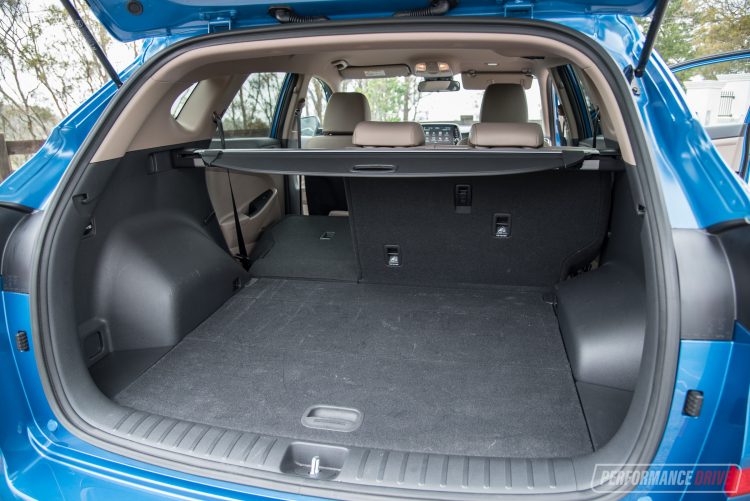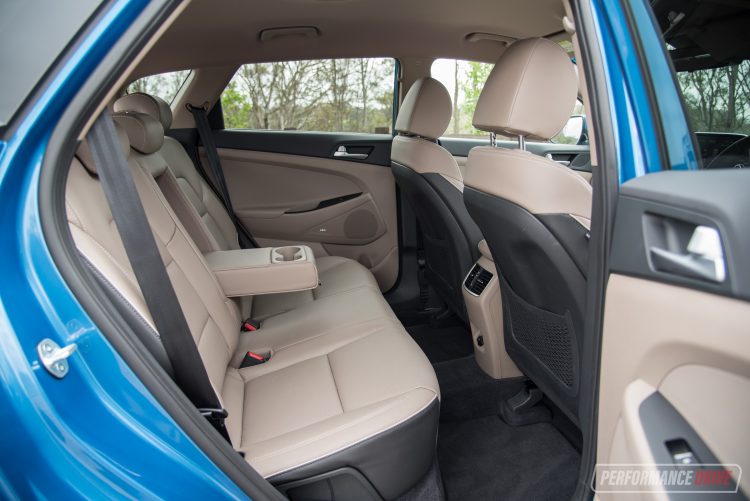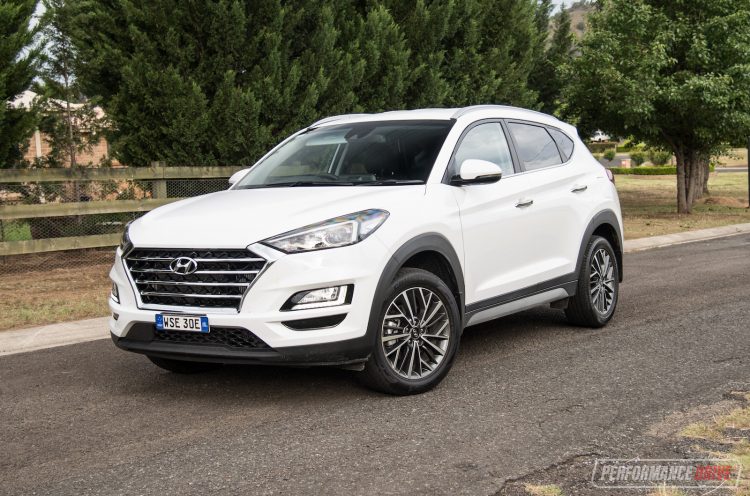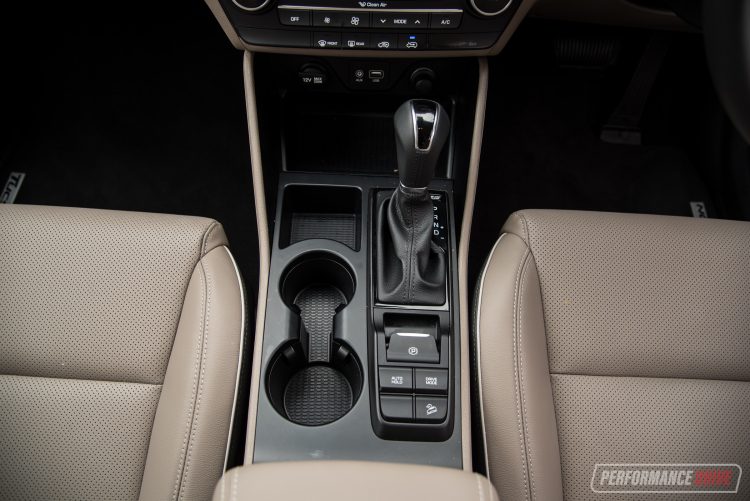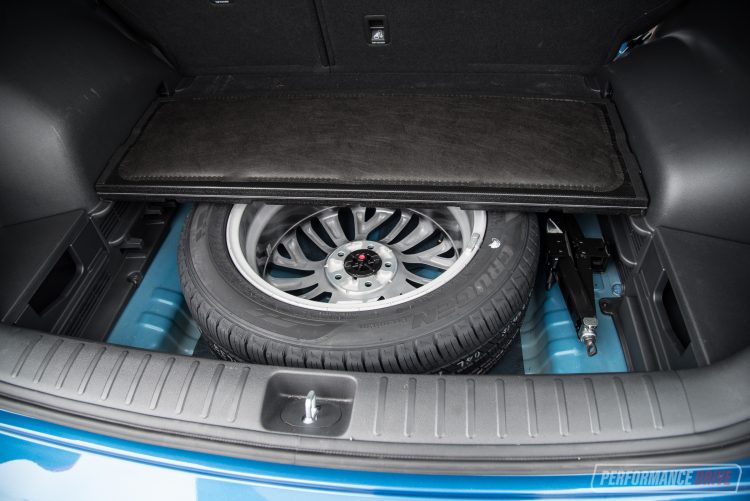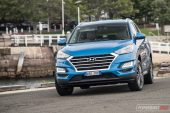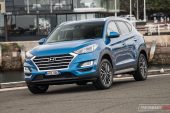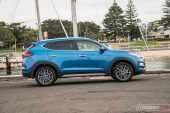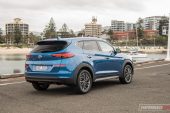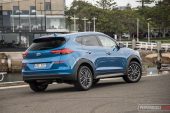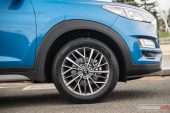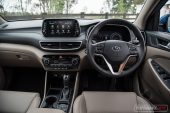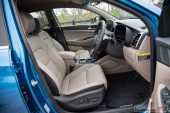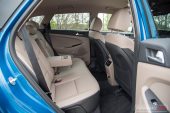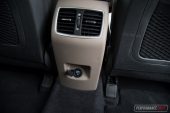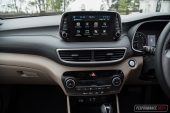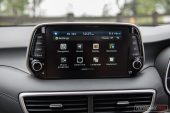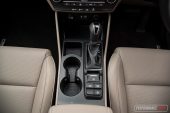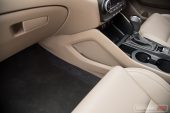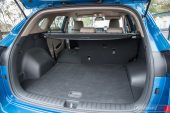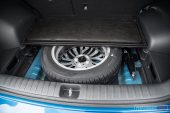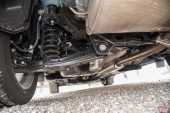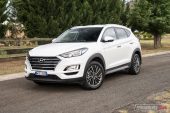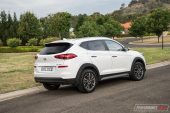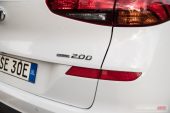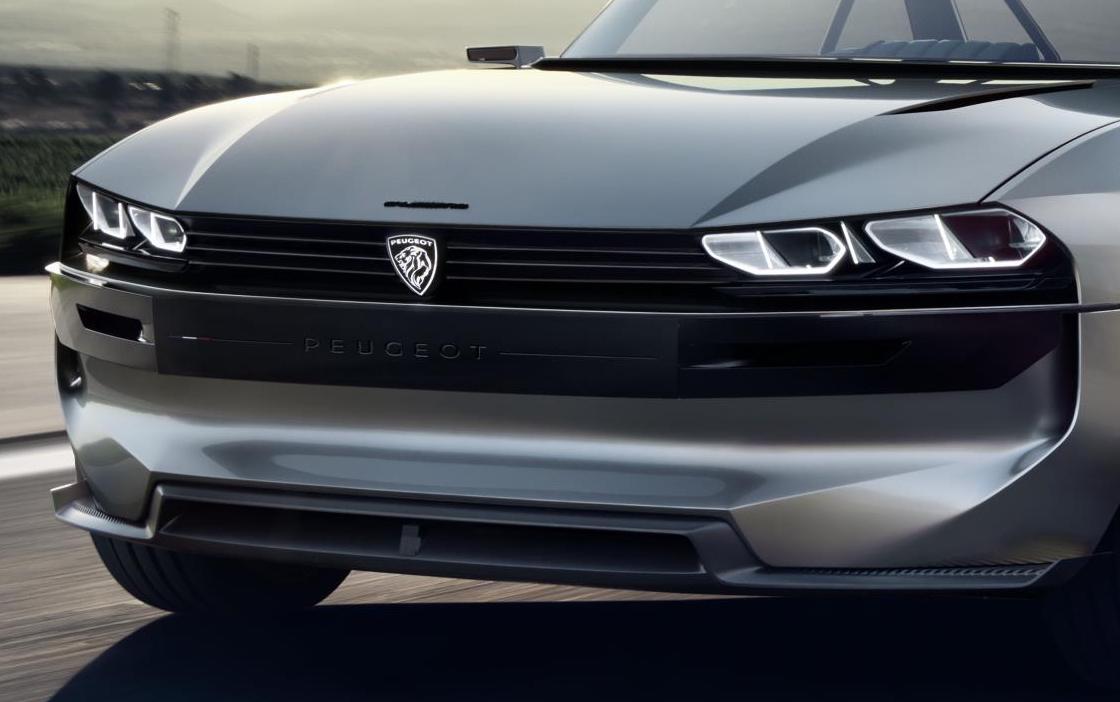With the abundance of SUVs on sale today, does the 2019 Hyundai Tucson, more specifically, the Elite model, stick out as something you should drop your hard-earned on?
The next question is, in this second-from-the-top Elite model, which engine is the one to go for? In this review we had a steer in the 122kW/205Nm 2.0-litre GDi petrol, and the 136kW/400Nm 2.0-litre CRDi turbo-diesel. They start from $37,850 and $43,850, respectively.
You can also opt for a 130kW/265Nm 1.6-litre turbocharged petrol four-cylinder engine if you want to stay with petrol power but you’d appreciate more grunt. Prices start from $40,850 for the Elite. You can check out the full price and lineup details in our previous story right here.
The MY19 Tucson is what we call a mid-life update. With the update comes fresh tech, new lights, a new cascading grille design, as well as some upgraded drivetrains.
The Tucson was Hyundai’s second best-selling vehicle last year and best-selling SUV, with 19,261 units shifted, just behind 28,188 i30s. It’s a segment that’s packed with good competition, so the fact that it’s a good seller surely means it’s a good car, right? Let’s delve into the details.
2019 Hyundai Tucson Elite 2.0 GDi – THE SPECS
[column width=”47%” padding=”6%”]Engine: 2.0-litre four-cylinder
Output: 122kW@6200rpm / 205Nm@4000rpm
Transmission: Six-speed auto
Drive type: Front-wheel drive
Wheels: F & R: 18×7.0, 225/55
ANCAP: Five stars (scored 35.53 out of 37)
Tare weight: 1550kg
Power-to-weight: 12.70:1 (kg:kW)
Official fuel economy: 7.9L/100km
Economy during test: 9.0L/100km
Fuel capacity/Type: 62L/91 RON
Power efficiency: 15.44kW:L/100km[/column] [column width=”47%” padding=”0″]0-60km/h: 5.02 seconds*
0-100km/h: 10.72 seconds*
60-110km/h: 7.74 seconds*
1/8 mile: 11.65 seconds at 105.5km/h*
1/4 mile: 17.73 seconds at 131.9km/h*
Max acceleration: 0.619g
100-0km/h braking: 3.20 seconds at 40.87 metres*
Max deceleration: -1.180g
Decibel at idle: 44*
Peak decibel at 60-100km/h: 79*
Priced from: $37,850[/column][end_columns]
2019 Hyundai Tucson Elite 2.0 CRDi – THE SPECS
[column width=”47%” padding=”6%”]Engine: 2.0-litre turbo-diesel four-cylinder
Output: 136kW@4000rpm / 400Nm@1750-2750rpm
Transmission: Eight-speed auto
Drive type: All-wheel drive
Wheels: F & R: 18×7.0, 225/55
ANCAP: Five stars (scored 35.53 out of 37)
Tare weight: 1726kg
Power-to-weight: 12.69:1 (kg:kW)
Official fuel economy: 6.4L/100km
Economy during test: 7.5L/100km
Fuel capacity/Type: 62L/Diesel[/column] [column width=”47%” padding=”0″]Power efficiency: 21.25kW:L/100km
0-60km/h: 4.58 seconds*
0-100km/h: 9.77 seconds*
60-110km/h: 7.10 seconds*
1/8 mile: 11.26 seconds at 108.0km/h*
1/4 mile: 17.21 seconds at 133.0km/h*
Max acceleration: 0.541g
100-0km/h braking: 3.21 seconds at 40.72 metres*
Max deceleration: -1.139g
Decibel at idle: 48*
Peak decibel at 60-100km/h: 80*
Priced from: $43,150[/column][end_columns]
* Figures as tested by PerformanceDrive on the day. Factory claims may be different
2019 Hyundai Tucson Elite – THE PACKAGE
The Elite model comes packed with quite a lot of kit for the money. There’s tyre pressure monitoring, rear parking sensors, a reversing camera, an 8.0-inch multimedia touch-screen with sat-nav and digital radio, and eight-speaker sound system with sub-woofer, heated mirrors, as well as leather seats.
Features that are unique to the Elite model include a smart key, push-button start, rear park assist, 18-inch alloy wheels, and most important of all, all the safety systems that come with the SafetySense pack — this is an option on the lower two models. It includes blind-spot monitoring, forward collision warning, pedestrian detection, auto emergency braking, lane departure warning, driver attention warning, active lane keep assist, rear cross-traffic alert, and adaptive cruise control. If that list of highly repetitive, no doubt important, safety features didn’t almost make you pass out as you read it, you did well.
Stepping into this updated Tucson presents a trim that’s reminiscent of a European vehicle, and very typical of Hyundai nowadays. Nothing is offensive to the eye, nor are the plastics and trims unpleasant to touch. The cabin is very airy for a medium-size SUV. There’s also lots of adjustment in the front seats to get comfortable, even if you are 194cm like this reviewer. And if you love to drink water from huge bottles, there’s ample storage for them.
Luggage capacity is 488 litres with the seats in the upright position, and 1478 litres when folded. How does the Tucson’s boot compare with the rest? Well, it’s bigger than the Mazda CX-5‘s boot (442L), but loses out to the Honda CR-V (552L) and Subaru Forester (498L). Important fact: under the boot floor is a proper, full-size spare wheel too — none of this silly space-saver stuff.
All Hyundai Tucson models come with Hyundai’s lengthy five-year/unlimited kilometre warranty, with 10 years roadside assist (if you service your car with a certified Hyundai service centre), and life-time capped-price servicing.
Of all the packaging, the only crappy thing, given the price, is the fact the Elite only comes with halogen headlamps. The LED headlamps are reserved for the top Highlander model.
2019 Hyundai Tucson Elite – THE DRIVE
Open the door. Swing leg across. Done. It’s not that the Tucson does vehicle entry any better than other SUV, it’s just something worth pointing out. Effortless entry makes for a relaxed immediate experience with the car.
Which brings us to the way it drives. Let’s talk about the engine difference between the 2.0-litre petrol and 2.0-litre turbo-diesel first, and how it handles after. The petrol is a rev-happy four-pot. If you want guts, you have to rev it. It goes well, registering a 0-100km/h time of 10.72 seconds with our Vbox, which is not bad at all for a base engine. But it’s not as eager as the diesel, which, for us, did the 0-100km/h dash in 9.77 seconds. Swapping from one into the other makes the pair feel like cousins rather than brothers or sisters.
That sweet, sweet torque from just 1750rpm in the CRDi, as well as the intuitive gear selection from the new eight-speed automatic transmission, makes it buttery-smooth to drive. For those who just read that buttery goodness, but really only like petrol, there’s some merit to the petrol model too, don’t worry. When you’re in a hurry there’s instant throttle response, and power up top isn’t too bad as well, right up in the revs. The GDi petrol isn’t a deal breaker, it’s just not as effortless as the diesel, especially during highway cruising and overtaking.
In terms of drive modes, both models do feel quite sluggish in Eco, with things improving in Comfort mode. These settings are obviously aimed at keeping the fuel gauge as close to full as possible. Sport mode does make a difference to throttle response, and we’d highly recommend engaging it if you’re in a hurry – or even just prefer a less docile drive. In saying that, the Sport mode in the GDi can seem a bit screamy at times, holding the gears and keeping those revs high.
Both models ride really, really well, with the diesel edging slightly ahead as the more stable to drive given it’s AWD running gear. It might also be the extra weight of the CRDi AWD model (1726kg vs 1550kg) helping it feel more planted.
The steering feel is a bit bland, as expected from a vehicle in this class, but there’s a nice mix of not too light at speed, and not to heavy around town. Visibility is also spot on, making you feel confident and reassured not just in the parking lot but also keeping in your lane. This is a car anyone from the family would feel happy driving.
2019 Hyundai Tucson Elite – THE VIDEO
2019 Hyundai Tucson Elite – THE VERDICT
Here’s an SUV that moulds well to your everyday life. Be it a family car, adventure car (although don’t think about climbing any serious mountains in it — not that we tried, it’s simply not built for that), or a nice daily driver that features that high-up driving position that so many lust for.
To make a choice between the petrol or diesel, we’d go for the diesel. The available torque down low is addictive. As is the benefit of not having to fill up as often given the lower overall combined consumption (official figures are 6.4L/100km vs 7.9L/100km). More than that, with the new eight-speed automatic the diesel drives nicer, feels less agitated and confused than the petrol when it comes to gear selection, and just gets on with the job.
Other than being nice to drive, it’s also nice inside. Hyundai doesn’t pull any punches when it comes to comfort nowadays. Only complaint we have is that three adults across the back, or two baby seats and one person, is squishy. If you think you’ll be using the rear seat in one of those configurations, regularly, you need the Santa Fe.
[column width=”47%” padding=”6%”]PROS:
– Practical cabin layout
– Surprisingly luxurious in Elite form
– Sharpened up design still looks premium
– Huge standard equipment/tech list
– Diesel provides strong and smooth shove
– Full-size spare
[/column] [column width=”47%” padding=”0″]CONS:
– 2.0 GDi petrol lacks torque, a bit of a screamer
– No flip-down tabs for the rear seats in the cargo area
– Not as sporty to drive as some rivals[/column][end_columns]
As always, if you’re thinking about buying a new car don’t forget to click here to speak with our car buying specialists.
